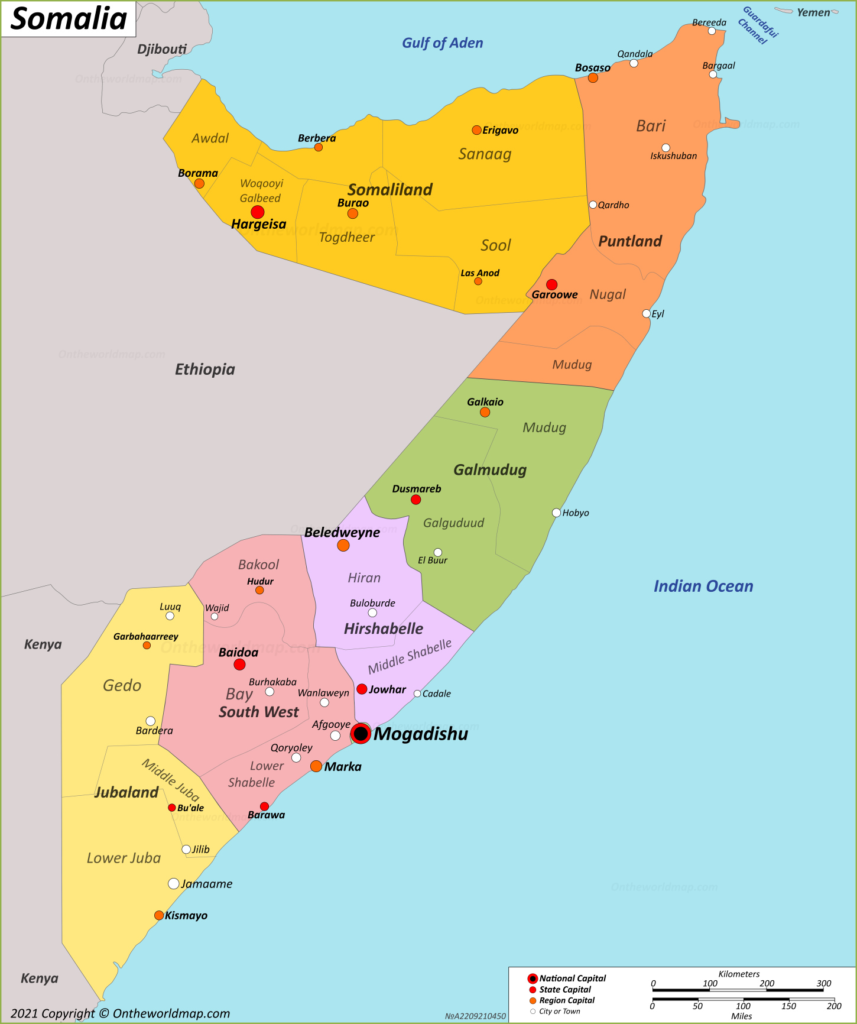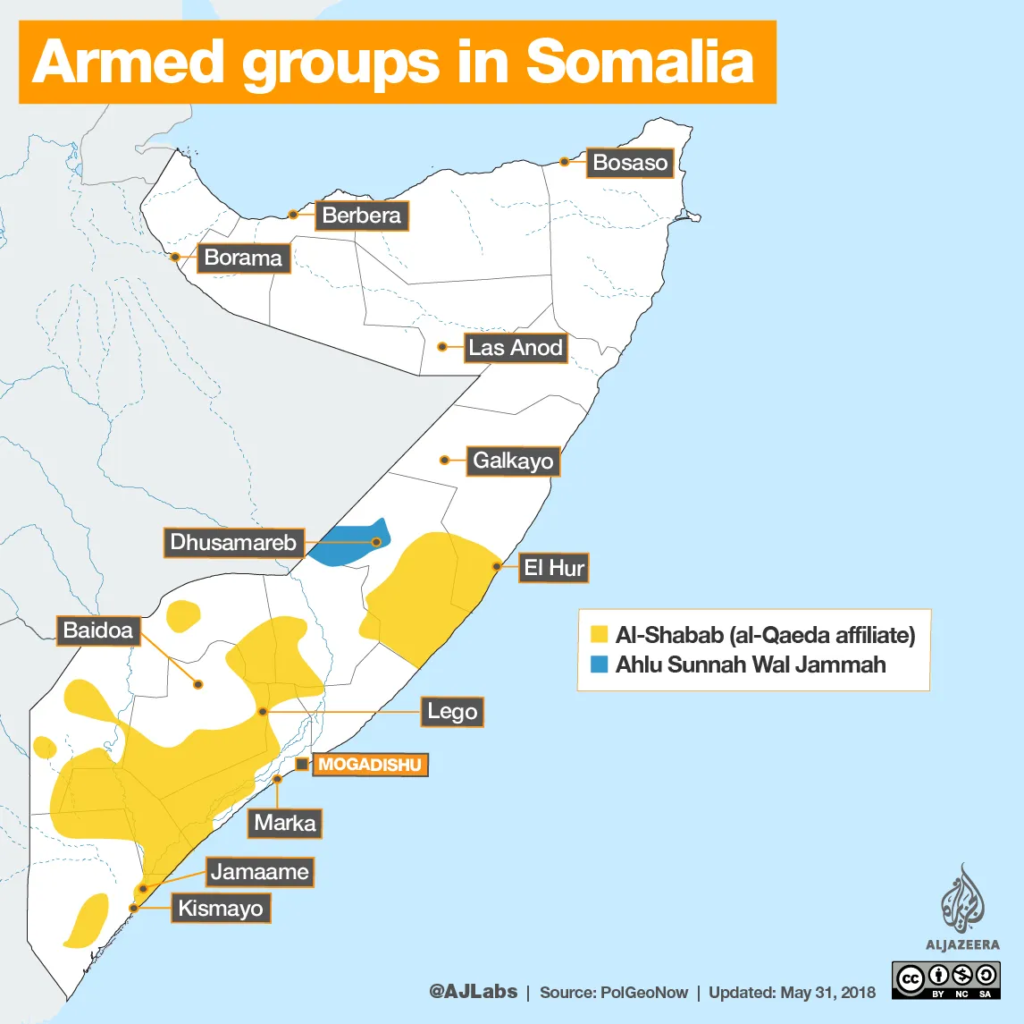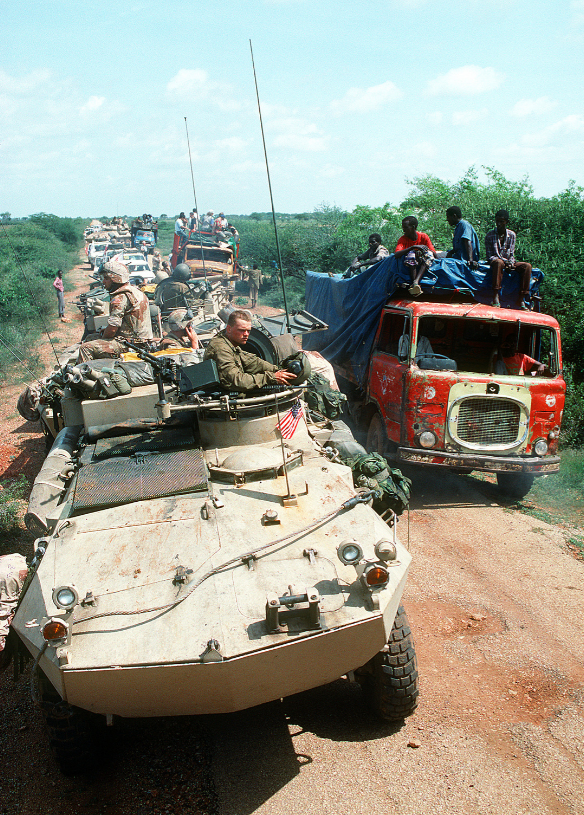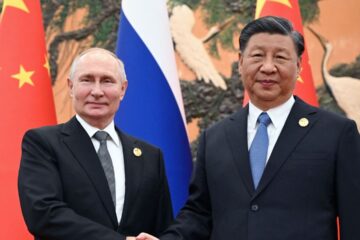SOMALIA: al-Qaeda’s base in Eastern Africa
I. A coveted territory in the Horn of Africa
During colonial conquests, European countries coveted the Horn of Africa, a strategic place between the Middle East and Africa and near a maritime route between Europe and Asia. Therefore, the British settled in the North of Somalia (current Somaliland) while the Italians colonised the southern region of Mogadishu, which experienced a quicker development.
When Mussolini lost power in Italy at the end of World War II, the United Kingdom reunited the two parts of Somalia and eventually gave it back to Italy in 1950. Ten years later, Somalia got its independence (1960).

II. Somaliland (1991) and Puntland (1998) declare their independence
In 1969, Siad Barre seized power with a coup and established a Marxist regime. However, in 1974, the USSR shifted its support away from Somalia towards Ethiopia, Somalia’s rival. Eventually, Siad Barre was overthrown in 1991.
Somaliland (northern region) took advantage of the situation to claim its independence. As a consequence, the country was thrown in disarray: enemy militias clashed and a famine killed 220,000 people.
Therefore, in 1992, US President Georges H. W. Bush launched Operation Restore Hope under the aegis of the UN. The objective for the US was to demonstrate that it can intervene militarily abroad solely for restoring peace and without having any hidden interest for the country’s natural resources (unlike in Kuwait in 1990-1991). Nevertheless, the engagement of 25,000 US troops disrupted the UN’s mediation efforts with local militias and fighting quickly resumed.
Following the death of 19 US soldiers, President Bill Clinton withdrew US troops from Somalia in 1993 which further deteriorated the security situation. Several peace conferences failed to solve the crisis which gave birth to the term “Somalization” i.e. when a country is torn between several rival armed groups and where disorder and poverty reign.
To add insult to injury, in 1998 the region of Puntland took advantage of the chaos to claim its autonomy from the central government which destabilised even more Somalia.
III. The rise and fall of piracy in Somalia
In 2007-2008, because halieutic resources have been overexploited by foreign ships, Somalian fishers teamed up with terrorist groups to attack boats passing off Somalian shores.
The EU (Operation Atalante since 2009), the US, China and Russia regularly conduct naval patrols to secure the area. Consequently, piracy was considered gone by 2012. Nonetheless, we should not forget that the situation on Somalian ground is still not improving.
IV. Islamist predation since 2006
In 2006, a Somalian armed group named the Islamic Courts Union seized a large part of the country (dark green on the map below). As a matter of fact, it made territorial gains quite easily because it offered an alternative to the State’s judicial system. Indeed, it supported a strict application of Allah’s law, the shari’ah. Despite its violent ideology, it brought order and addressed the anarchy that reigned in some territories.

Ethiopia, whose population is mainly Christian, intervened so as to counter the Islamic Courts Union’s growing influence. It got support from the US and fought alongside Somalian troops including troops from Puntland. They defeated the Islamic Courts Union in 2009.
However, this intervention actually worsened the situation as another more radical Islamist group emerged: al-Shabaab. Its ascension was so fast that between 2009 and 2011 it had conquered most of Southern Somalia including the capital city Mogadishu. Somalian troops and the African Union Mission to Somalia (AMISOM) managed to force them out of the city but their territorial possessions remained substantial.
Al-Shabaab actions in Somalia provoked migration waves towards neighbouring countries and in particular Kenya. The latter has welcomed 250,000 Somalian migrants. To stop this phenomenon, it sent troops in 2011 to stabilise Somalia and destroy al-Shabaab. Even though it significantly weakened al-Shabaab, Kenya now suffers from regular terrorist attacks on its own soil.

In 2012, al-Shabaab gave its allegiance to al-Qaeda and now occupies a central place in al-Qaeda’s communication strategy. It endeavours to reinforce its position in Somalia playing on state weaknesses and using weapons smuggled from Yemen. The 10,000-12,000 al-Shabaab fighters also plan to keep on attacking Kenya and Ethiopia where mountainous regions could be convenient for establishing bases.
The objectives of al-Shabaab are:
- Overthrow the government of Somalia;
- Expel foreign forces;
- Establish a “Greater Somalia” that would gather all ethnic Somalis of East Africa. This entity would be ruled according to the Shari’ah.
While Somalia is deemed a failed state, Somaliland enjoys some degree of economic development and political stability. Nevertheless, Somaliland’s self-proclaimed independence (1991) hasn’t been recognised yet by the international community as it fears encouraging further secessionist movements in the region.




4 Comments
Has the world entered a “no war, no peace” era? – geopol-trotters · 21 March 2025 at 10:35 am
[…] led to the banalisation of the weak winning over the strong: wars of decolonisation, warlords in Somalia against the US in 1992-1993, the Taliban in Afghanistan, jihadism in the […]
Limits of the power vacuum logic in Africa – geopol-trotters · 14 May 2023 at 4:37 am
[…] African States have their word to say in deciding who is going to stay or leave their country. They also have their word to say in choosing how to solve their problems. Indeed, we are currently witnessing more and more African leaders promoting the “African solutions to African problems” approach. It is especially the case in Central and Eastern Africa in countries like Uganda, Rwanda, the DRC and Somalia. […]
From Clinton to Biden: a look back on 30 years of US leadership – geopol-trotters · 14 April 2023 at 8:10 pm
[…] 1992, President Bush launched Operation Restore Hope in order to bring peace to Somalia where rebel factions were fighting each other. The objective was […]
Al-Qaeda and Daesh in Africa - geopol-trotters · 31 December 2022 at 8:11 am
[…] of the territories on which they fight. Al-Qaeda strongholds are the Sahel region, Nigeria and Somalia. It endeavours to expand to the Gulf of Guinea and Eastern […]